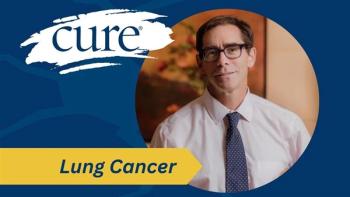
Extending Remission in Ovarian Cancer
Transcript:
Maurie Markman, MD: We turn to our final section on this really very interesting conversation with both of you, from my perspective, on this very important topic of recurrence. The patient is doing well. He or she is feeling well but there’s evidence that the disease comes back. Justin, you sort of alluded to the potential of recurrence. How do you discuss this with patients and their families? How do you detect it? What do you do next?
Justin Chura, MD: Sure. We take the patient who comes in with stage 3 or 4 cancer. We do surgery, chemotherapy, and we achieve a remission. At that point, we don’t elect for maintenance. We are observing and following up with the patient through surveillance. During their surveillance visits, the patient may be feeling perfectly well. We talk about what to watch for, symptoms to be in tune for, going back to their original diagnosis. “If you start to experience that bloating, that nausea, or that low back pelvic pain that you had 4 years ago, we need to know.” And so, part of it is talking about the symptoms and the risk of recurrence, so that the patient is aware of that high risk. Then, we’re as vigilant as we can be, going forward.
When we’re faced with the recurrence, as I mentioned, it changes how we talk about the disease treatment strategy. We’re not talking cure. Instead, we’re talking treatment. What are the goals of treatment? What do we want to do? We want to extend survival but, at the same time, we also have to preserve a person’s quality of life. I’d do you no favors if I gave you a combination of drugs or therapies and you can’t get out of bed for a week or a month. Or, if you end up hospitalized for a complication from the treatment. We really have to sort of temper what the treatment side effects are, what the disease side effects are, and what realistic milestones can be achieved. And, as I mentioned, the recurrence at 3 months is very different than the recurrence at 3 years, in terms of what we can expect and how we approach treatment.
Maurie Markman, MD: Justin, one of the questions that comes up under this topic of therapy versus observation is watch and wait. Obviously, there’s a conversation with patients. How do you approach that conversation and about the potential value of continuing therapy? Obviously, a patient has responded to therapy. They’ve gotten platinum and whatever else and they see the benefits of it, versus the side effects. How does that conversation with the patients go?
Justin Chura, MD: With the assumption being, “OK, we’ve achieved a great response,” if it’s the first line of therapy, a lot of times those patients are more than ready for a break. They’ve been through surgery and they’ve been through chemotherapy for weeks or months. They’ve experienced side effects and toxicity. So, those patients may be more than ready to take a treatment break, to go with watch and wait, as opposed to trying maybe a maintenance therapy, to see if we can extend that remission or their progression-free survival.
With the recurrent setting, patients know, “OK, I’m going to now be dealing with this all the time,” whether it’s following up or whether it’s active treatment. Then, the conversation may lean more toward, “All right, we’re achieving a response. What can we do that will have minimal impact on your quality of life, with minimal side effects, but still maintain the response we’re seeing?” And that’s where the benefit of maintenance therapy can really play a role for a patient. Stability, keeping something in-check, can actually be a good outcome if we can do that with minimal toxicity, minimal side effects, and minimal impact on a person’s quality of life.
The hard part is, we don’t know the severity of side effects until we try. It’s a very individualized discussion. Some patients will come in already having done their research and their homework. They kind of know what they want. It’s an open-ended question. Or, we present pros and cons to each. And a lot of times, it’s a scenario of, “We’re going to talk about this today, but we’re not making any decision.” “We’ll talk about it today. I will call you next week.” Or “You’ll come back in on the following week and we’ll make a plan as to how we wish to proceed,” with maintenance therapy or surveillance. And then, the question is, what does surveillance look like? Do we use a CA-125 test as part of surveillance, or not? Do we just do a physical exam and a careful history every 3 months? So, those are questions that we address on the individual level.
Maurie Markman, MD: To follow on with what you said, going back to my own experience over several decades now, when we talk about the therapy, we talk about some pretty toxic stuff. The platinums are incredibly wonderful drugs. The taxanes are incredibly wonderful drugs. But they have an awful lot of side effects. So, in the past, the concept of maintaining was very difficult. With the drugs that we have today, we can begin to have that conversation where we can not only maintain that response, but can maintain that response with a really impressive and positive quality of life. It obviously adds a whole other part to the conversation. It’s, “Yes, not only can we maintain it but, from the point of view of the impact on the disease, we can positively maintain quality of life, to allow you to do what you want to do while still potentially taking therapy.” That’s obviously an evolving concept that we’re learning about. And, of course, the randomized control trial data are really quite impressive, in that regard.
Transcript Edited for Clarity




